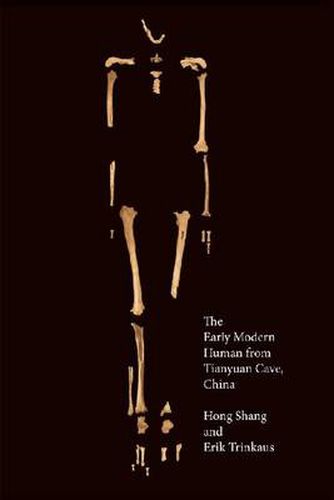Readings Newsletter
Become a Readings Member to make your shopping experience even easier.
Sign in or sign up for free!
You’re not far away from qualifying for FREE standard shipping within Australia
You’ve qualified for FREE standard shipping within Australia
The cart is loading…






For more than a century, scientists have returned time and again to the issue of modern human emergence-the when and where of the evolutionary process and the human behavioral and biological dynamics involved The 2003 discovery of a human partial skeleton at Tianyuandong (Tianyuan Cave) excited worldwide interest. The first human skeleton from the region to be directly radiocarbon-dated (to 40,000 years before present), its geological age places it close to the time period during which modern humans became permanently established across the Old World (between 50,000 and 35,000 years ago). Through detailed description and interpretation of the most complete early modern human skeleton from eastern Asia, The Early Modern Human from Tianyan Cave, China, addresses long-term questions about the ancestry of modern humans in eastern Asia and the nature of the changes in human behavior with the emergence of modern human biology. This book is a detailed, paleontological and paleobiological presentation of this skeleton, its context, and its implications. By providing basic information for this important human fossil, offering inferences concerning the population processes involved in modern human emergence in eastern Eurasia, and by raising questions concerning the adaptations of these early modern human hunter-gatherers, The Early Modern Human from Tianyuan Cave, China will take its place as a core contribution to the study of modern human emergence.
$9.00 standard shipping within Australia
FREE standard shipping within Australia for orders over $100.00
Express & International shipping calculated at checkout
For more than a century, scientists have returned time and again to the issue of modern human emergence-the when and where of the evolutionary process and the human behavioral and biological dynamics involved The 2003 discovery of a human partial skeleton at Tianyuandong (Tianyuan Cave) excited worldwide interest. The first human skeleton from the region to be directly radiocarbon-dated (to 40,000 years before present), its geological age places it close to the time period during which modern humans became permanently established across the Old World (between 50,000 and 35,000 years ago). Through detailed description and interpretation of the most complete early modern human skeleton from eastern Asia, The Early Modern Human from Tianyan Cave, China, addresses long-term questions about the ancestry of modern humans in eastern Asia and the nature of the changes in human behavior with the emergence of modern human biology. This book is a detailed, paleontological and paleobiological presentation of this skeleton, its context, and its implications. By providing basic information for this important human fossil, offering inferences concerning the population processes involved in modern human emergence in eastern Eurasia, and by raising questions concerning the adaptations of these early modern human hunter-gatherers, The Early Modern Human from Tianyuan Cave, China will take its place as a core contribution to the study of modern human emergence.